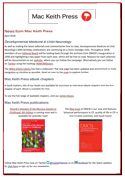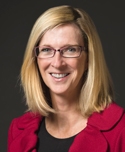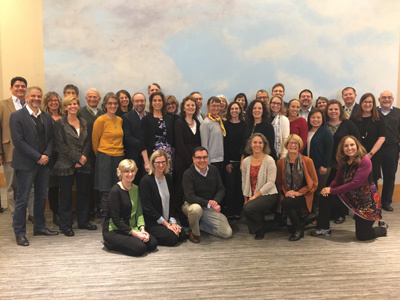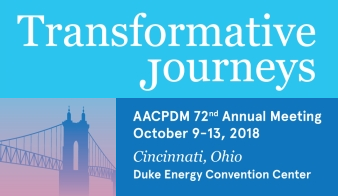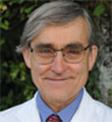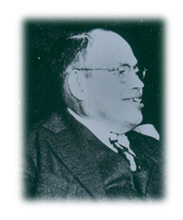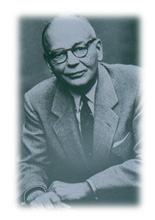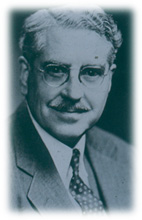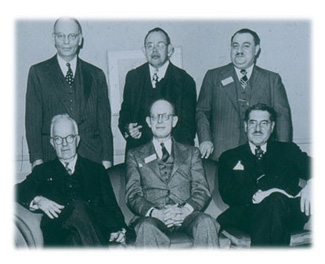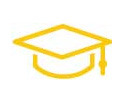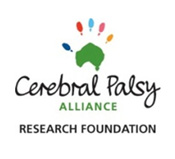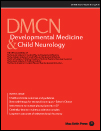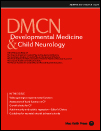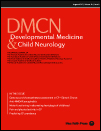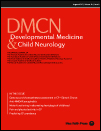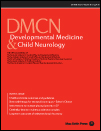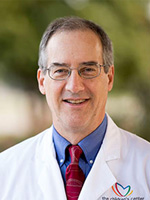
President's Message
goals should remain intact and unchanged. The goals include the following:
The focus of strategic planning led by our fabulous internal consultants and past presidents, Drs. Maureen O’Donnell and Darcy Fehlings, has been to find out what new objectives we have under each goal. We accomplished much in the 2013-2017 strategic plan and we will push onward towards new objectives and/or further the objectives set forth in the previous plan. On March 8, in Chicago, the Board, Committee Chairs, Chair-elects, and Scientific Chairs for 2018 and 2019 Annual Meetings gathered to participate in strategic planning. We had a full day of activity beginning with reviewing the input you all gave us regarding the relative priorities of each of the goals and your suggestions for new objectives under each goal. We reviewed the previous strategic plan, data on membership, and our accomplishments to date. We broke into small groups and made suggestions for new activities under each goal. We then voted on our top priorities. This work will continue through the summer with a Board meeting to confirm the suggestions from this day. At the upcoming Fall annual meeting, committees will be asked to give their input on how to produce the work of the strategic plan. For those of you who have done strategic planning in the past, for the AACPDM or other organizations, you know that this is a creative process and hard work. It takes time, and with thoughtful participation, we will have an excellent product that will guide us through the next 3 years Academy activity. Thank you to all those who have contributed so far.
As President of the AACPDM, Dr. James Rice invited me to the Australasian Academy of CP and DM, in Auckland, New Zealand, March 21–24, 2108. I was pleased to see so many familiar faces and also meet new friends. Although a slightly smaller group than the AACPDM, the passion, commitment to the cause, and the scientific integrity of the work accomplished made me feel right at home (even though could not have been farther away from my hometown of Park City, Utah). I was pleased to find that this group has embraced the concept of dancing on Friday evening just as our Academy does. The added fun was that everyone (ok, mostly the women), dressed in Roaring Twenties attire. They even had a photo booth to record the event! Many thanks to Dr. Rice and the incoming President, Dr. Christine Imms. Our first Vice President, Dr. Jilda Vargus-Adams, will be representing the AACPDM in May at the European Academy on Childhood Disability in Tbilisi, Georgia (the country, not the state). She will be sending our best wishes for a successful meeting. Speaking of meetings, Dr. Vargus-Adams and her Scientific Co-Chairs, Dr. Leslie Wiart and Dr. Kristen Pierz, are working hard with our meeting planner, Amanda Senkbeil, and Executive Director, Tracy Burr, to put on a wonderful meeting in Cincinnati, Ohio, on October 10-13, 2018. Transformative Journeys is the theme. Dr. Vargus-Adams assures us there will be a band and there will be dancing. Until then, with best wishes, Sarah Winter 72nd Annual Meeting
Join us in Cincinnati, Ohio for the AACPDM 72nd Annual Meeting, October 9-13, 2018! The theme of this year’s meeting is “Transformative Journeys”. The diverse program options leave countless paths for you to create your own valuable experience in Cincinnati, which was recently ranked number 8 on the “52 Places to Go in 2018” by The New York Times. The scientific meeting begins with pre-conference offerings:
The official Welcome Reception will be held at the historic Cincinnati Netherland Plaza in the Hall of Mirrors where you will be able to connect with colleagues. A robust program will be offered Thursday through Saturday with expanded Breakfast Seminar and Instructional Course offerings! In mid-May, the 2018 Preliminary Program will feature online registration to various educational sessions that include:
As a compliment to the session offerings, Keynote Lectures are sure to capture your attention with topics on knowledge mobilization and implementation, personalized voices for persons with communication challenges, genetics of preterm birth, Eating and Drinking Ability Classification System (EDACS), consideration of disability in the built environment, and more! Beyond formal education, the AACPDM 72nd Annual Meeting will provide numerous opportunities for networking and collaboration, especially at the Networking Dinner and Celebration on Friday, October 12th at Cincinnati Historic Music Hall. Be sure to book your stay in one of the two hotels offering the AACPDM a discounted group rate within walking distance to the Duke Energy Convention Center. The group rate will be available until September 11, 2018 OR until all have been booked at the group rate, whichever comes first. We recommend booking your hotel as soon as your travel plans have been confirmed. Hilton Cincinnati Netherland Plaza Hyatt Regency Cincinnati The preliminary program and registration will launch by May 31st at www.aacpdm.org/meetings/2018. We look forward to seeing you in Cincinnati, Ohio! History of our Academy, Part II
Earl R. Carlson was born in 1897 in Minneapolis. Dr. Carlson had athetoid cerebral palsy. Despite this, he received an MD degree from Yale in 1931. As a student at Yale, he worked with Dr. Phelps who prescribed physical therapy for him and took an interest in his future. Dr. Carlson later established a cerebral palsy clinic at the Neurological Institute in the Presbyterian Medical Center in New York. In the mid-1930’s, he set up a residential summer school for children with disabilities in East Hampton, New York. Soon after, he began to bring all the children along with him to Florida to the Lago Del Mare School of Corrective Education in Pompano Beach which he directed. He was elected third president of the AACP in 1950. Dr. Carlson wrote an autobiographical book Born That Way, outlining in simple and personal terms the internal struggles that he recalled in his efforts to achieve success. In May 1974, shortly before his death, he was awarded a Certificate of Appreciation by the Academy. The Carlson Graduate Education Fund was established by Mrs. Carlson in his name: $12,000 (1974 dollars), which later was converted into the AACPDM endowment fund.
George G. Deaver was born in 1890 in Baltimore. He was a pioneer in clinical rehabilitation. He received an MD degree from the University of Pennsylvania in 1917. His interest in rehabilitation began in Egypt, treating British army pilots injured in World War I. In 1933 he was an instructor in the Department of Physical Education at New York University and in 1941 became the first Medical Director of the Institute for the Crippled and Disabled in New York. In 1943 he was the founder and Director of Children’s Services of the Institute of Rehabilitation Medicine of New York University Medical Center. He retired as professor in July 1960 but continued working as medical director of the division until September 1967. During and after World War II, he was on the Baruch Commission for Physical Medicine and Rehabilitation. He strongly emphasized “the activities of daily living.” He followed Winthrop Phelps as president of the Academy in 1949. Sedgwick Mead, president in 1967, described Deaver as a “model of self-effacement” for whom he held “an endearing admiration the last few years of his life.” One of his trainees was Leon Greespan who later became an AACPDM president. Dr. Deaver died in 1973.
Temple S. Fay was born in 1895 in Seattle. He received an MD degree from the University of Pennsylvania in 1921. He joined the faculty of Temple University in 1929. He and Dr. Phelps had begun discussing the possibility of starting a society for individuals with an interest in cerebral palsy as early as 1944. He was a brilliant and gifted neurosurgeon and was selected in 1927 to receive a Gold Medal award from the AMA for original research. He was one of the founders of the Harvey Cushing Neurological Society, the American Board of Neurosurgery, and the American Board of Psychiatry and Neurology. In 1943 he founded the Neuro-Physical Rehabilitation Clinic in Chestnut Hill, PA, for the care, treatment, and vocational rehabilitation of cerebral palsy, spastic paralysis and organic speech disorders. He was especially interested in primitive movement patterns. He was involved in establishing cerebral palsy clinics in Denmark and in Great Britain. Although he did not serve as president of the Academy, he was the first vice president in 1959. Dr. Fay died in 1963. There were interesting relationships among the six founders. Dr. Crothers was the senior of the group and had developed an interest in the therapeutic approach because of his contact with the physical therapist at Boston Children’s Hospital. Dr. Phelps, during his fellowship at Harvard, had been influenced by Crothers and, in turn, used this training to help Carlson physically during his medical school days at Yale. Dr. Perlstein had early on developed a program in pediatric neurology at Cook County Hospital and was drawn to the subject of cerebral palsy, finding it “irresistible and fascinating,” upon hearing Dr. Phelps’ lecture on the topic.
Elliott O’Reilly, AACPDM president in 1974 and Academy Historian for several decades, identified the six “Founding Fathers” as the key people in the history and ultimate longevity of the Academy. They shared strong personalities, and “they used to fight tooth and nail.” As Bill Berenberg, president in 1968, recalls the early history: “My first recollection of the Academy was when Bronson Crothers returned from the meeting when it was conceived, armed with a lot of paper and regaling me about the two days which were spent in attempting to define cerebral palsy. When the minutes of that organizational meeting were submitted—they were written by Meyer Perlstein—Dr. Crothers asked his secretary to file it under “Utter Confusion.” The formative years of the Academy were rather nostalgic. For the most part, they really functioned as a traveling club of individuals who had a mutual interest in handicapped children. Most of the early meetings included the presentation of relatively informal papers with a good deal of emphasis on the personal exchange of ideas and information… The discussions were vivid, constantly challenging, and it was a brave man who did challenge anybody else, but this happened all the time… Many of us sat up until small hours of the morning inspired by the open and imaginative exchange of information…” References
AACPDM eCOURSES
Check out the eCourses! Earn CME/CEUNext eCourse topic is Managing Aspiration Pneumonia in July 2018. Stay tuned for scheduling notifications. What is an AACPDM eCourse?It is a multi-week, online, self-paced course in which you can earn CME/CEUs. The cost is minimal: $100 members / $150 non-members. Committee UpdatesThe Academy wouldn’t be here today without the dedication and enthusiasm by volunteers. The work of by the AACPDM committees makes this Academy stand the test of time in accomplishing the vision and mission. Take a moment to read through the committee accomplishments at midyear. Adapted Sports and Recreation Advocacy Awards Care Pathways Communications Complex Care
The sub-committee submitted an Instructional Course “Navigating the Gray: Clinical Decision-Making with Families and Their Children with Medical Complexity in the Face of Uncertainty” and a Breakfast Seminar entitled “Autonomic Instability in Children with Medical Complexity,” both of which were accepted for presentation at the 2018 Annual Meeting. The Literature sub-committee created a number of goals as well, including:
The sub-committee is hard at work compiling the very best articles and preparing to create a new resource for the AACPDM membership focused on complex care. Education International Affairs The International Affairs Committee awarded 16 well-deserving applicants with an International Travel Scholarship. This year, the committee has decided to evenly disburse the funds in the set amount of $1,250 amongst 16 recipients. The deadline has passed and the committee will now work to select this year’s recipients from a pool of 20 applications. The committee is also working to improve the member travel portion of the AACPDM website along with an effort to improve retention of Corresponding Members. Looking forward to the 2018 Annual Meeting, the committee will once again host the International luncheon, which continues to be a big hit among attendees. Lifespan Care The Lifespan Care Committee has forged ahead in the always challenging task of improving transition and adult care within the Cerebral Palsy community. Their Instructional Course submission, “Transformative Journeys into Adulthood: Best practices to promote life skills and to receive emerging adults with childhood onset disabilities into adult care,” was accepted and will be part of the Lifespan Course Track they plan to create for attendees at the 2018 Annual Meeting. They will also continue to update the Find a Professional resource on the AACPDM website with providers who offer adult care, so please take a moment to ensure the patient information is correct in your online profile! Membership The Membership Committee will bring back the popular Advisor Support Program for 2018 and is preparing to send out invitations for Advisor enrollment. If you are an established member of the Academy (10 or more years) and would like to serve as an Advisor, you can enroll online on the Advisor Program portion of the AACPDM website. For members who have been part of the AACPDM for 5 or less years, the committee encourages you to take advantage of the knowledge of established Academy leaders (Advisors) and sign up to participate as an Advisee (sign up opens in May). The committee has also started their work of reviewing the 19 applications received for the OrthoPediatrics Travel Scholarship. Six scholarships in the amount of $1,500 will be awarded to the most-deserving applicants. Additionally, the committee is working on many ideas to increase membership and establish specific criteria for those wishing to become Emeritus members. Publications Research AACPDM Job PostingsLooking for a new career path, please check out the new job postings on the website. CURRENT OPEN POSITIONS
Full details are located here: http://www.aacpdm.org/job-postings/view Cerebral Palsy Alliance Research Foundation
A key fund-raising effort is the annual “Steptember” (www.steptember.us<http://www.steptember.us/>) event. Through the month of September participants strive to take at least 10,000 steps (or their equivalent), organize competitive teams, and raise funds for CP research while “stepping up” their exercise routines. Last year was a great success in which nearly a million US dollars were raised. Academy members and friends are welcome to join this effort to support cerebral palsy research. Every cent of the money raised through Steptember in the U.S. has been distributed to the successful peer-reviewed research projects in the U.S. for 2018. Here is a list of awardees:
A special grant was made by CPARF through the generosity of the Jessica Berman Foundation to Dr. Terry Sanger, University of Southern California, to develop a new method for identifying optimal targets for Deep Brain Stimulation in children with cerebral palsy and secondary dystonia. The CPARF has provided the Academy with $25,000 annually to distribute as a competitive cerebral palsy research grant to its members. Submitted by: PUBLISHED WORKSAACPDM members are having their research, commentaries, reviews and editorials published and we are showcasing their contributions published by Developmental Medicine and Child Neurology. The AACPDM member is noted in bold font below.
November 2017 Volume 59 Number 11 Editorial Commentary
Reviews
Original Articles
December 2017 Volume 59 Number 12 Editorial
Commentary
Authors: Steven M Day, Robert J Reynolds
Authors: Alicia J Spittle Review
Authors: Irene Moll, Johannes S H Vles, Dan L H M Soudant, Adhiambo M A Witlox, Heleen M Staal, Lucianne A W M Speth, Yvonne J M Janssen‐Potten, Marcel Coenen, Suzanne M Koudijs, R Jeroen Vermeulen Original Articles
Authors: Lena Krumlinde‐Sundholm, Linda Ek, Elisa Sicola, Lena Sjöstrand, Andrea Guzzetta, Giuseppina Sgandurra, Giovanni Cioni, Ann‐Christin Eliasson
January 2018 Volume 60 Number 1 Editorial
Author: Bernard Dan Reviews
Authors: Jenny Downs, Amanda Marie Blackmore, Amy Epstein, Rachel Skoss, Katherine Langdon, Peter Jacoby, Andrew J O Whitehouse, Helen Leonard, Peter W Rowe, Emma J Glasson, The Cerebral Palsy Mental Health Group
Authors: Mijna Hadders‐Algra Original Articles
Authors: Joy E Olsen, Leesa G Allinson, Lex W Doyle, Nisha C Brown, Katherine J Lee, Abbey L Eele,s Jeanie L Y Cheong, Alicia J Spittle
Authors: Alicia J Spittle, Karli Treyvaud, Katherine J Lee, Peter J Anderson, Lex W Doyle
Authors: Shona Goldsmith, Sarah Mcintyre, Nadia Badawi, Michele Hansen
Authors: Thomas Dreher, Pam Thomason, Martin Švehlík, Leonhard Döderlein, Sebastian I Wolf, Cornelia Putz, Oliver Uehlein, Kohleth Chia, Gerhardt Steinwender, Morgan Sangeux, H K Graham
February 2018 Volume 60 number 2 Editorial
Intro to Debate
Reviews
Editorial
Transformative Practice GrantWe are now accepting applications through May! Submit application and letter of support to info@aacpdm.org The intent of the transformative practice grant is to facilitate the translation of evidence-based clinical management strategies into practice. Funding is available to support members to plan and implement specific intervention strategies that are supported by research evidence. The award is based on the premise of ‘academic detailing’ whereby ‘experts’ who have been involved in the successful implementation of specific evidence-based management strategies within their facility support the host facility in the implementation of those strategies for changing clinical practice. Research suggests that academic detailing is an effective strategy for implementing changes in clinical practice. The specific objectives of the program are to:
ELIGIBILITY REQUIREMENTS
Click here to see full application details Editor's Note
|
